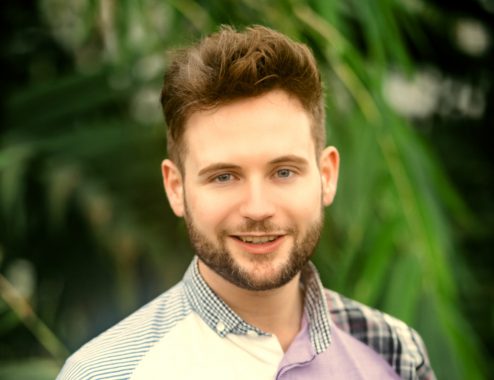‘What a lovely photo, how old is your son now?’ This question would come up at least once during each joint clinic with my previous GP trainer. Her consulting room, with photographs of her son (just turned five), her husband and some more artful shots helped to tell a story of who she was, what her passions were and what she was proud of. This space, psychologically safe and comfortable for GP and patients alike, allowed her patients to relax, having been offered a glimpse of the human side of the clinician in front of them.
As we all learn in communication skills training, environment plays an important part in any patient interaction. We all need to feel secure and welcome to open up and share ourselves with relative strangers. Discomfort in doing so can be especially severe amongst marginalised communities, where anticipated fear of prejudice or lack of understanding can undermine the building of the patient-clinician relationship.
Growing up as LGBT+, I experienced these feelings during my teens and early twenties, trying to second guess the response from family, friends, colleagues, my own GPs and later patients, before deciding how much of myself to share with others. I have been lucky to grow up through an environment that means I now see being gay as a blessing, something I feel is a hugely valuable piece of my identity and has made me a stronger clinician, understanding the fear and prejudice that many face because of who they are or who they love.
Now is a great time to think about what your desk, practice or place of work says to both staff and patients
Sadly, not every LGBT+ person gets to feel this sense of pride in their identity, with the healthcare service still having a lot of work to do to support our community. Recent Stonewall figures highlight the extent of this, with almost one in four (23%) patients having witnessed negative remarks about LGBT+ people from healthcare staff, and one in seven (14%) LGBT+ people saying they had avoided treatment altogether for fear of the discrimination they may face. Meanwhile, LGBT+ people continue to experience higher than average rates of depression, anxiety and other medical conditions, with many health needs going unmet.
It was therefore with great excitement that I recently joined together with a small group of other grassroots GPs to begin developing a new programme of work with the RCGP on improving outcomes for the LGBT+ community. As well as new e-learning resources, face-to-face teaching events and a national campaign to make general practice more inclusive, we have also had our application accepted to march in this year’s London and Brighton Pride events. This will make us the first medical Royal College to march in Pride, joining hundreds of thousands of people and more than 500 organisations to celebrate diversity and the LGBT+ community.
As this new programme of work gets going, I have reflected on those interactions between my trainer, her patients and her photographs. When the time comes for me to finish GP training and hopefully have my own room, I too want to have the photos of those closest to me – my husband Benjamin, our friends and hopefully our future children. But I will also want to have a rainbow and trans flag flying proudly, a clear symbol of who I am and the safe space I offer.
As we enter LGBT+ Pride month, now is a great time to think about what your desk, your practice or place of work says to both staff and patients. Whether as an LGBT+ person or an ally, what could you do to help create a more inclusive environment, that welcomes all and celebrates the diversity that makes primary care such a fantastic place to work. A Pride parade may just be one day, but working with pride is something that should last all year.
Happy Pride everyone!
Dr Anthony James is a GP trainee in north London. You can follow him on Twitter at @DrAnthonyJames
Pulse October survey
Take our July 2025 survey to potentially win £1.000 worth of tokens












